10.01.2019
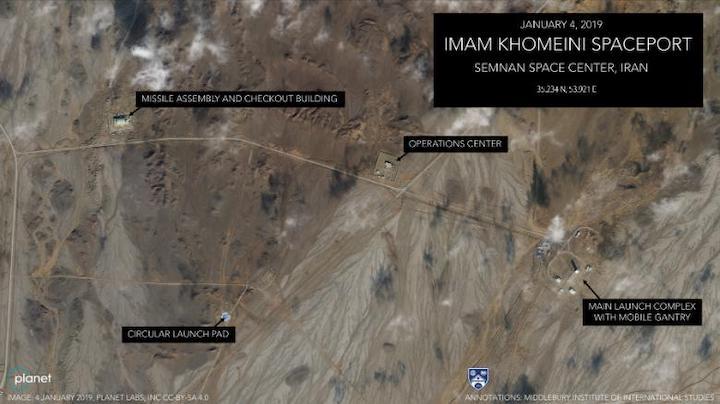
Washington (CNN)New images obtained by CNN Tuesday indicate Iran is preparing to launch a remote sensing satellite into space, the latest sign that the Islamic Republic is moving ahead with the planned mission despite recent warnings from US Secretary of State Mike Pompeo.
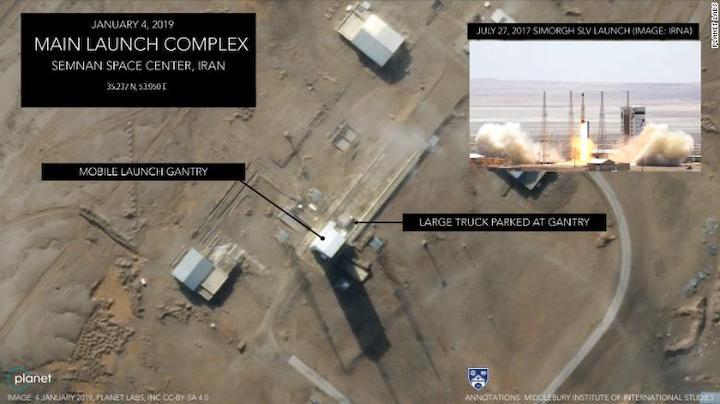
Iran Is Preparing A Launch. But Is It For A Space Rocket Or A Missile?
About once a day, little satellites zip over northern Iran and snap a few pictures of the Imam Khomeini Space Center. The satellites, operated by a company in San Francisco called Planet, haven't recorded much — until recently.
Signs Of Activity At Iran’s Imam Khomeini Space Center
Vehicle traffic has increased at a building where rockets are assembled and at the main launchpad.
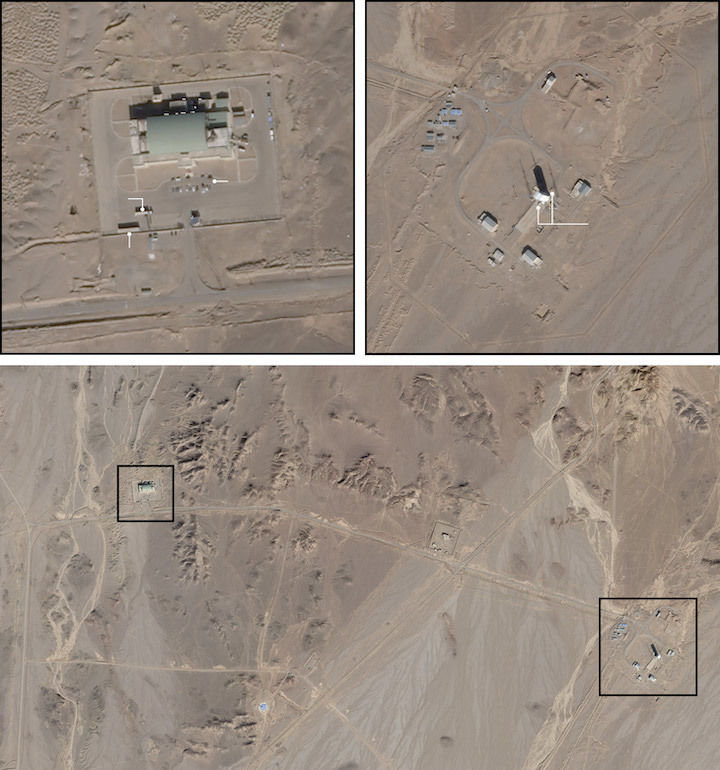
Source: Satellite imagery by Planet Labs Inc, taken on Jan. 10 and 11. Analysis and annotations by the James Martin Center for Nonproliferation Studies, Middlebury Institute of International Studies at Monterey
Credit: Geoffrey Brumfiel and Alyson Hurt/NPR
"We're seeing all kinds of activity," says Jeffrey Lewis, a scholar at the Middlebury Institute of International Studies at Monterey, who is analyzing the images as they come in. In recent days, he has noticed cars and trucks moving around the site.
"We saw a large number of fuel trucks show up, suggesting that there is fuel being moved to the site," Lewis says. "We can also just see all kinds of activity at both launch pads."
Iran has said publicly that its motives are peaceful. It soon intends to launch several satellites for communications and remote-sensing as part of the nation's long-running space program. But in a statement, Secretary of State Mike Pompeo recently called the planned launches "provocative." He said these launches, if they happen, are really about developing intercontinental ballistic missiles (ICBMs). The technology used by Iran, he said, is "virtually identical" to what's needed for an ICBM.
So which is it?
Markus Schiller, the founder of ST Analytics, an independent consultancy in Germany, has spent a lot of time looking at Iran's space program. He says the program does have links to the military. For example, the engines Iran uses on its Simorgh space launcherhave a military origin.
"It is actually a missile engine," he says.
But not a very good one, he says. It's an old design from the Soviet Union, picked up by the North Koreans and later transferred to Iran. It's clunky and inefficient, and it uses a low-power kind of rocket fuel.
That means a lot of fuel is required to get even a small payload into space, or a warhead to a distant target. The rocket has to be huge. It takes weeks to set up, and it can probably only launch when the weather is favorable.
Also, Schiller says based on press photos like those released before a launch of the Simorgh in 2017, Iran's space rocket can't work as a missile. Its second stage is too small. Put it all together and he takes Iran at its word.
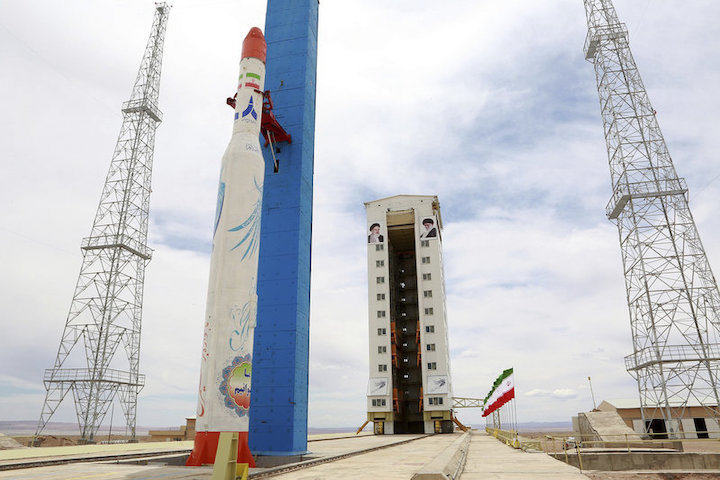
Iran's Simorgh rocket pictured before an attempted satellite launch in 2017. Experts say the rocket's second stage is too small to be used as a missile.
Iranian Defense Ministry
"Iran always claims that they don't want to build an ICBM but they want to pursue a space program," he says. "That's what I'm seeing right now."
Even then, could a peaceful space program be a step toward developing a long-range missile?
Not necessarily.
"If you look at the history of missile development worldwide, space launch activity has never been decisive," says Michael Elleman, a physicist and senior fellow for missile defense at the International Institute for Strategic Studies.
In fact, he says, in every case he can think of, it has gone the other way around: Nations don't turn their rockets into missiles, they turn their old missiles into rockets.
"We've lived through this debate once before," Lewis notes. In 2012, when North Korea launched a satellite into orbit, the U.S. called it "ballistic missile technology" and the U.N. Security Council tightened sanctions.
But that "didn't stop North Korea from conducting space launches," Lewis says. "And more importantly, when North Korea did build an ICBM, they built a different ICBM."
The missiles North Korea tested in 2017 used different engines and fuels than the rocket it had earlier used to launch its satellites.
Elleman worries that the Trump administration's focus on Iran's upcoming space launches could be counterproductive. Instead, he says, the U.S. should focus its diplomatic energy on much shorter-range Iranian missiles. Those missiles are already being used by proxy groups like Iranian-backed rebels in Yemen to threaten U.S. allies.
"I think we're spending a lot of political capital complaining about something that is not a direct threat or risk to the United States or the international community," he says.
Quelle: npr
The rocket carrying the satellite "failed to reach the required speed in the third stage," according to the country's communications minister.
Iranian Communications Minister Mohammad-Javad Azari said the rocket carrying the satellite "failed to reach the required speed in the third stage, even though it succeeded in the first two stages of the launch."
Last week, Iranian Foreign Minister Mohammad Jawad Zarif announced that, despite US warnings, Iran would be continuing its space program. The program includes Space Launch Vehicles which have technology akin to that of a ballistic missile.
"There is no international law that prohibits us from [continuing]," Zarif said.
Last week, the European Union froze the assets of an Iranian intelligence unit and two of its staff, as the Netherlands accused Iran of two killings on its soil in 2015 and 2017, and joined France and Denmark in alleging Tehran plotted other attacks in Europe.
The move, although in part symbolic since one of the men is in prison in Belgium, marks the first time the EU has enacted sanctions on Iran since lifting a host of curbs on it three years ago following its 2015 nuclear pact with world powers.
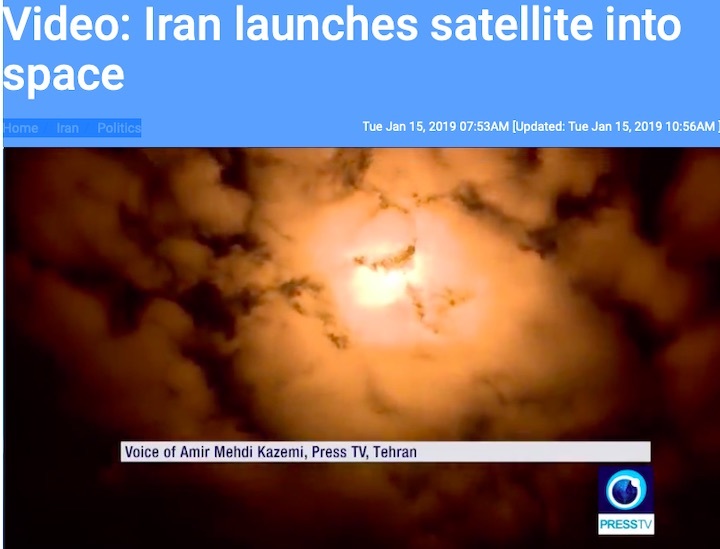
Iran to launch 'Friendship Satellite' soon
Tehran, Jan 24, IRNA – Doosti (Friendship) Satellite, the only fully domestic Iranian made satellite, will be launched in the coming few weeks, said official of the Sharif University of Technology of Tehran on Thursday.
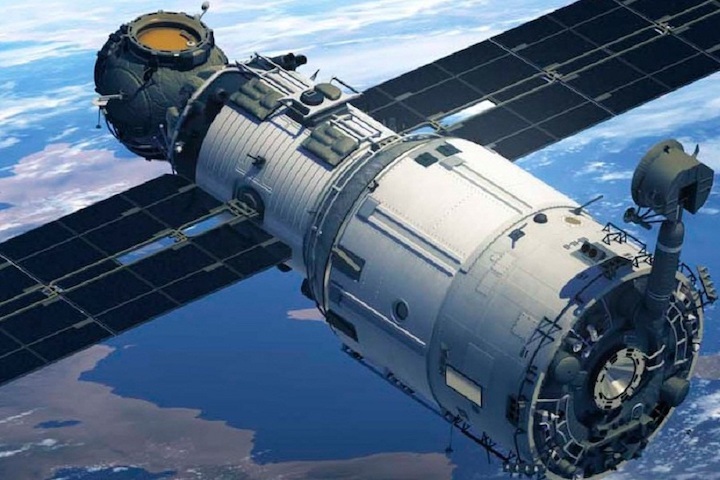
'More than fifty patented technologies have been used in the satellite,' said Hossein Mokhtari.
Regarding Payam satellite, he said if the satellite hadn’t speeded up, it would have stayed in orbit and done well.
On January 16, Iran reported that it has managed to successfully send Payam (Message) satellite into space but failed to practically place into the orbit
One Official said that Payam satellite was very close to its target, adding that the scientific projects may sometimes be unsuccessful at the start of operation.
Elaborating on launch of Payam, Motamedi said it sent necessary terrestrial information which shows it did well.
About five minutes after being launched, Payam satellite crashed into the Indian Ocean, said the chancellor, adding it just plummeted into water and did not blow up.
Quelle: IRNA
